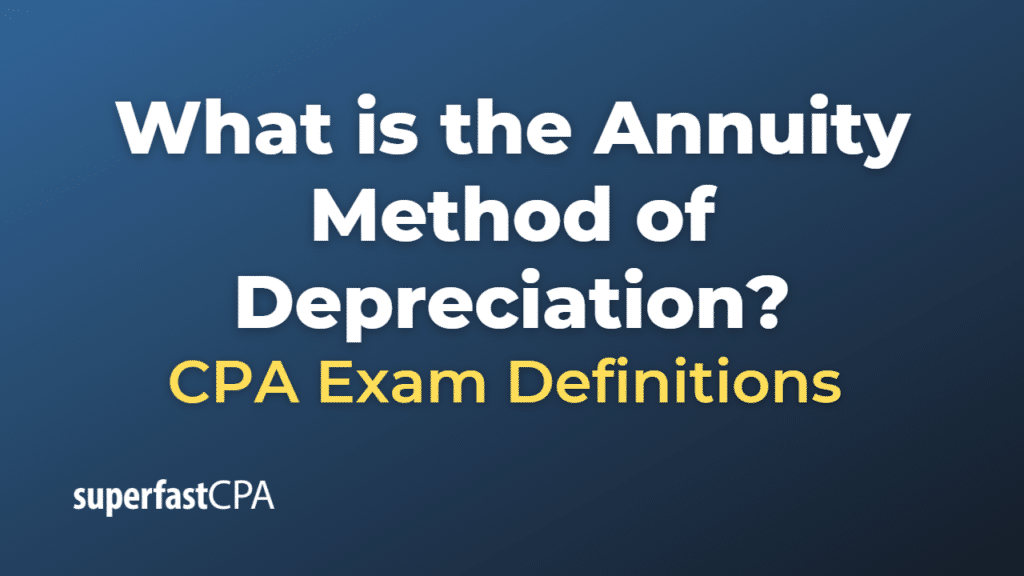Annuity Method of Depreciation
The annuity method of depreciation is a method used to allocate the cost of an asset over its useful life in a way that takes into account the time value of money. Under this method, the depreciation expense is determined by treating the asset as if it were an annuity, where the annual depreciation expense is equal to a constant percentage of the remaining book value of the asset. This method results in higher depreciation expenses in the early years of an asset’s life and lower expenses in the later years, recognizing the fact that the asset’s value is worth more in the present than in the future.
The annuity method of depreciation is calculated using the following formula:
Depreciation Expense = Remaining Book Value * Depreciation Rate
Where:
- Remaining Book Value is the asset’s cost minus accumulated depreciation at the beginning of the period.
- Depreciation Rate is a constant percentage that is applied to the remaining book value each year.
The annuity method of depreciation is rarely used in practice, as other methods like straight-line or declining balance methods are more common and easier to apply. However, it can be helpful in specific scenarios where it’s essential to consider the time value of money.
Example of the Annuity Method of Depreciation
Let’s say a company purchases a machine for $50,000, and the machine has an estimated useful life of 5 years with no residual value. The company decides to use the annuity method of depreciation and chooses a depreciation rate of 25% for the calculation.
Here’s how the depreciation expense and remaining book value will be calculated for each year:
Year 1:
- Depreciation Expense: $50,000 * 25% = $12,500
- Remaining Book Value: $50,000 – $12,500 = $37,500
Year 2:
- Depreciation Expense: $37,500 * 25% = $9,375
- Remaining Book Value: $37,500 – $9,375 = $28,125
Year 3:
- Depreciation Expense: $28,125 * 25% = $7,031.25
- Remaining Book Value: $28,125 – $7,031.25 = $21,093.75
Year 4:
- Depreciation Expense: $21,093.75 * 25% = $5,273.44
- Remaining Book Value: $21,093.75 – $5,273.44 = $15,820.31
Year 5:
- Depreciation Expense: $15,820.31 * 25% = $3,955.08
- Remaining Book Value: $15,820.31 – $3,955.08 = $11,865.23
At the end of the 5-year period, the total accumulated depreciation is $38,134.77 ($12,500 + $9,375 + $7,031.25 + $5,273.44 + $3,955.08), and the remaining book value of the machine is $11,865.23.
As you can see, the depreciation expense is higher in the earlier years and decreases in the later years. This approach reflects the time value of money, as the asset is worth more in the present than in the future.













